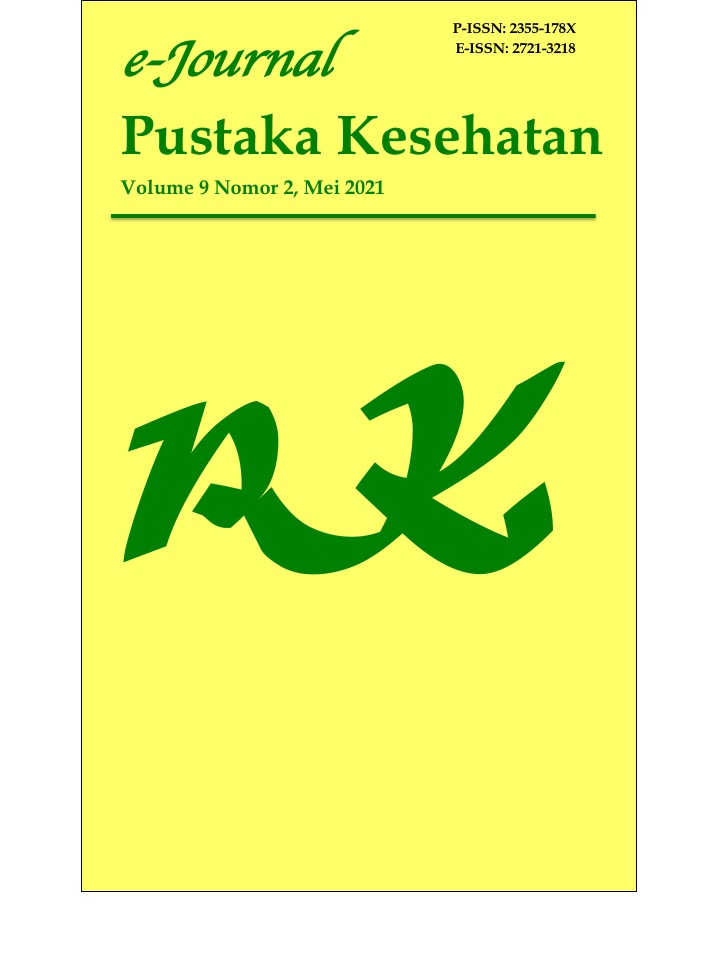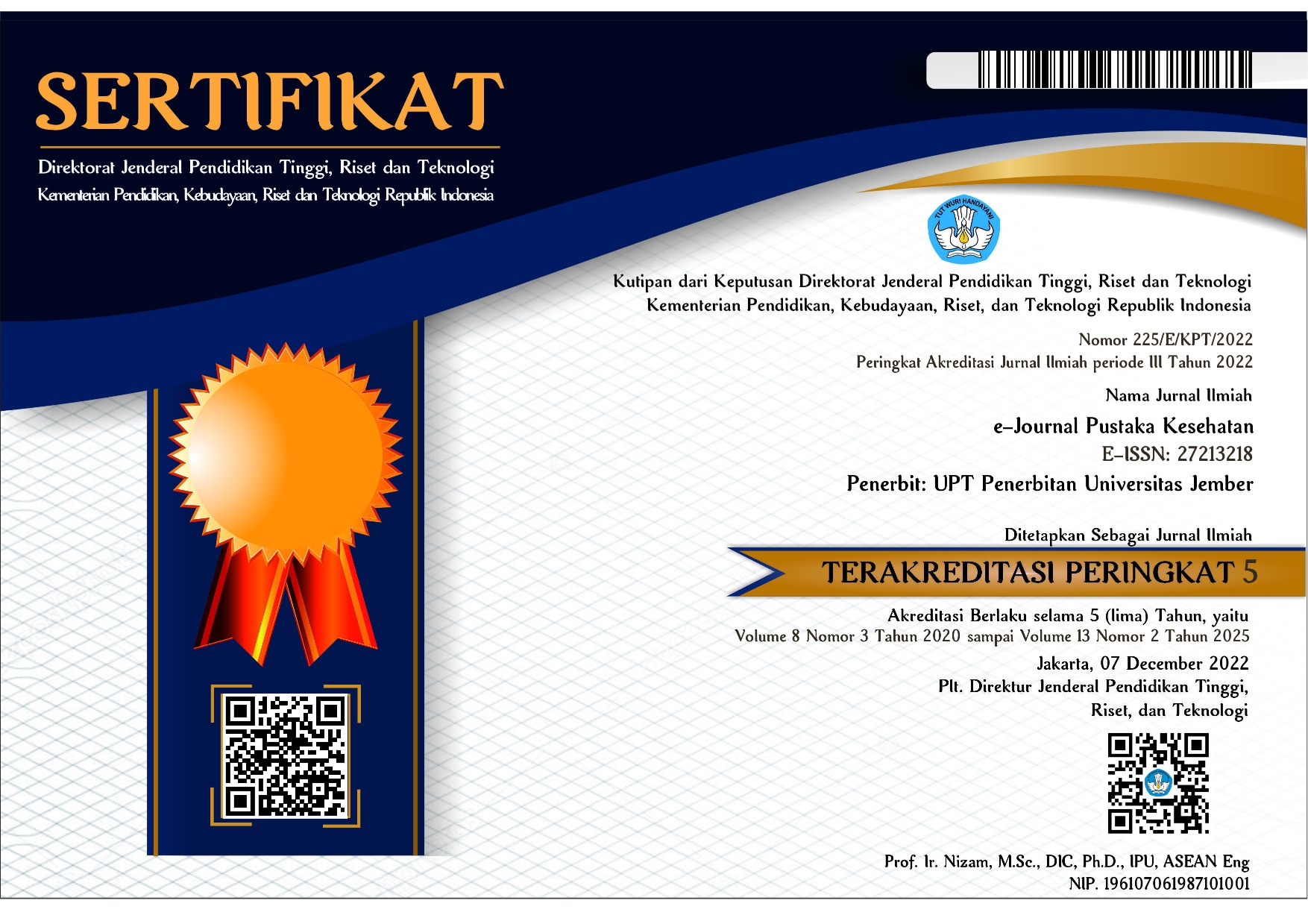Gambaran Derajat Keasaman (pH), Volume, Viskositas dan Kapasitas Buffer Saliva pada Anak Down Syndrome di Sekolah Luar Biasa Kabupaten Jember
DOI:
https://doi.org/10.19184/pk.v9i2.17857Keywords:
salivary pH, volume, viscosity, buffer capacity, down syndromeAbstract
Down syndrome is a congenital disorder that results in the inhibition of mental and physical development. People with down syndrome experience physiological changes in the flow rate of saliva and its composition. These changes will reduce the function of saliva in protecting teeth. The purpose of this study was to examine the salivary pH, volume, viscosity, and buffer capacity of children with down syndrome in Special Needs School Jember. This study was an observational study on 18 children from 3 Special Schools in Jember. The unstimulated saliva volume was determined by spitting methods, saliva viscosity using Ostwald viscosimeter, and salivary buffer capacity by Erricson methods. The results were the salivary pH was normal tends to be alkaline, the saliva volume was normal tends to low, the saliva viscosity was normal, and the buffer capacity of saliva was good. This will be useful to be taken into consideration for the dental and oral health program of down syndrome children
Downloads
References
[2] Rina, Amherstia Pasca. 2016. Meningkatkan Life Skill pada Anak Down Syndrome dengan Teknik Modelling. Jurnal Psikologi Indonesia 5 (03): 215 – 225
[3] Kawanto, F.H. and Soedjatmiko, S., 2016. Pemantauan Tumbuh Kembang Anak dengan Sindrom Down. Sari Pediatri, 9(3): 185-90.
[4] Hastin, Sulistyani, Sari D.S. 2014. Tingkat Keparahan Gingivitis Pada Penderita Down Syndrome dan Retardasi Mental di SLB Bintoro dan SDLB Negeri Jember. Skripsi. Universitas Jember.
[5] Franco, G., Saab, R., Variani Pizzatto, L., Torres, M.F., Fregoneze, A.P. and Brancher, J.A., 2014. Analysis of salivary pH, flow rate, buffering capacity, concentrations of calcium, urea and total proteins in 2-8 years-old children with Down’s syndrome. RSBO Revista Sul- Brasileira de Odontologia, 11(1)
[6] Raurale, A., Viddyasagar, M., Dahapute, S., Joshi, S., Badakar, C., Mitesh, K. and Purohit, V., 2013. Evaluation of oral health status, salivary characteristics and dental caries experience in Down's syndrome children. NJIRM, 4(6): 59-65.
[7] Surarti, Made Ayu, Tince A Jovina, dan Indirawati Tjahja N. 2017. Pengaruh (pH) Saliva terhadap Terjadinya Karies Gigi pada Anak Usia Prasekolah. Buletin Penelitian Kesehatan 45 (4): 241 – 248
[8] Soham B, Srilatha K, Seema D. 2016. Salivary characteristics of Down Syndrome children. J Oral Hyg Health 4(2): 201.
[9] Normastura, A.R., Norhayani, Z., Azizah, Y. and Khairi, M., 2013. Saliva and dental caries in down syndrome children. Sains Malaysiana, 42(1): 59-63.
[10] Marasabessy, F.A., 2013. Hubungan volume dan pH saliva pada lansia. Skripsi. Makassar: Universitas Hasanuddin, pp.42-44.
[11] Novy B, Young D. 2010. Dental caries: A pH-mediated disease. J of CDHA 25(1): 11-13
[12] Almeida, P.D.V., Gregio, A.M., Machado, M.A., De Lima, A.A. and Azevedo, L.R., 2008. Saliva composition and functions: a comprehensive review. J Contemp Dent Pract, 9(3): 72-80.
[13] Cogulu D, Sabah E, Kutukculer N, Ozkinay F. 2006. Evaluation of the relationship between caries indices and salivary secretory IgA, salivary pH, buffering capacity and flow rate in children with Down’s syndrome. Arch Oral Biol. 51(1):23-8
[14] Kimura, F., Aizawa, K., Tanabe, K., Shimizu, K., Kon, M., Lee, H., Akimoto, T., Akama, T. and Kono, I., 2008. A rat model of saliva secretory immunoglobulin: a suppression caused by intense exercise. Scandinavian journal of medicine & science in sports, 18(3): 367-372
[15] Roletta H.E. 2002. Pengaruh stimulus pengunyahan dan pengecapan terhadap kecepatan aliran dan pH saliva. J Kedokteran Gigi Universitas Indonesia 1(9): 29-34
[16] Cheng RHW, Yiu CKY, Leung WK. 2011. Oral health in individuals with Down syndrome. Prenatal diagnosis and screening for Down syndrome. 1(5): 6973
[17] Suharsini M., Pengaruh faktor genetik dan lingkungan terhadap bentuk fasial penderita sindroma Down, J. of Dentistry 4(4): 124-128
[18] Lely, M.A., 2017. Pengaruh (pH) saliva terhadap terjadinya karies gigi pada anak usia prasekolah. Buletin Penelitian Kesehatan 45(4): 241-248
[19] Raurale, A., Viddyasagar, M., Dahapute, S., Joshi, S., Badakar, C., Mitesh, K. and Purohit, V., 2013. Evaluation of oral health status, salivary characteristics and dental caries experience in Down's syndrome children. NJIRM, 4(6):59-65
Downloads
Published
Issue
Section
License
e-Journal Pustaka Kesehatan has CC-BY-SA or an equivalent license as the optimal license for the publication, distribution, use, and reuse of scholarly work. Authors who publish with this journal retain copyright and grant the journal right of first publication with the work simultaneously licensed under a Creative Commons Attribution-ShareAlike 4.0 International License that allows others to share the work with an acknowledgment of the work's authorship and initial publication in this journal.







